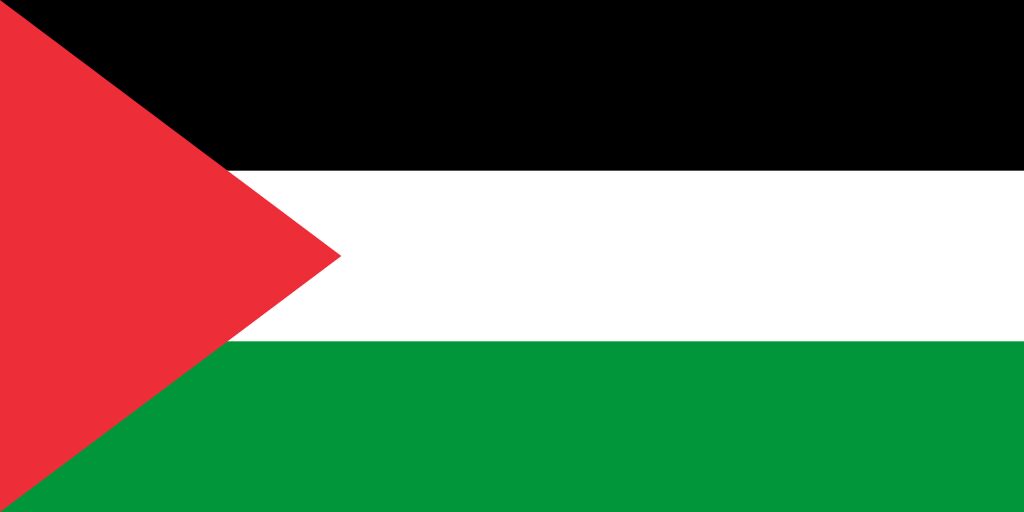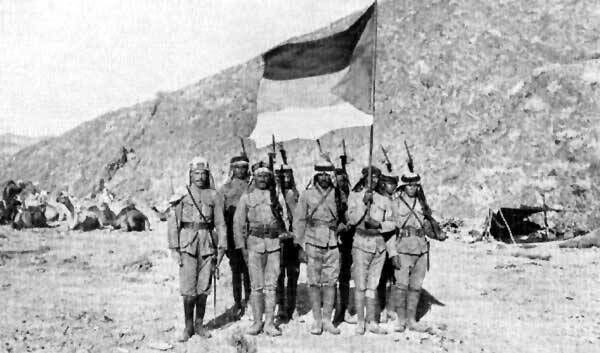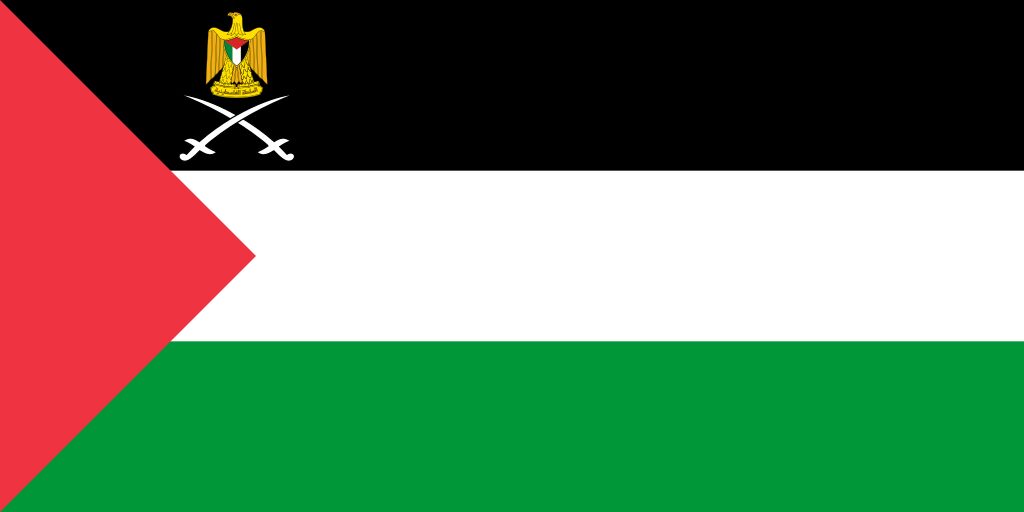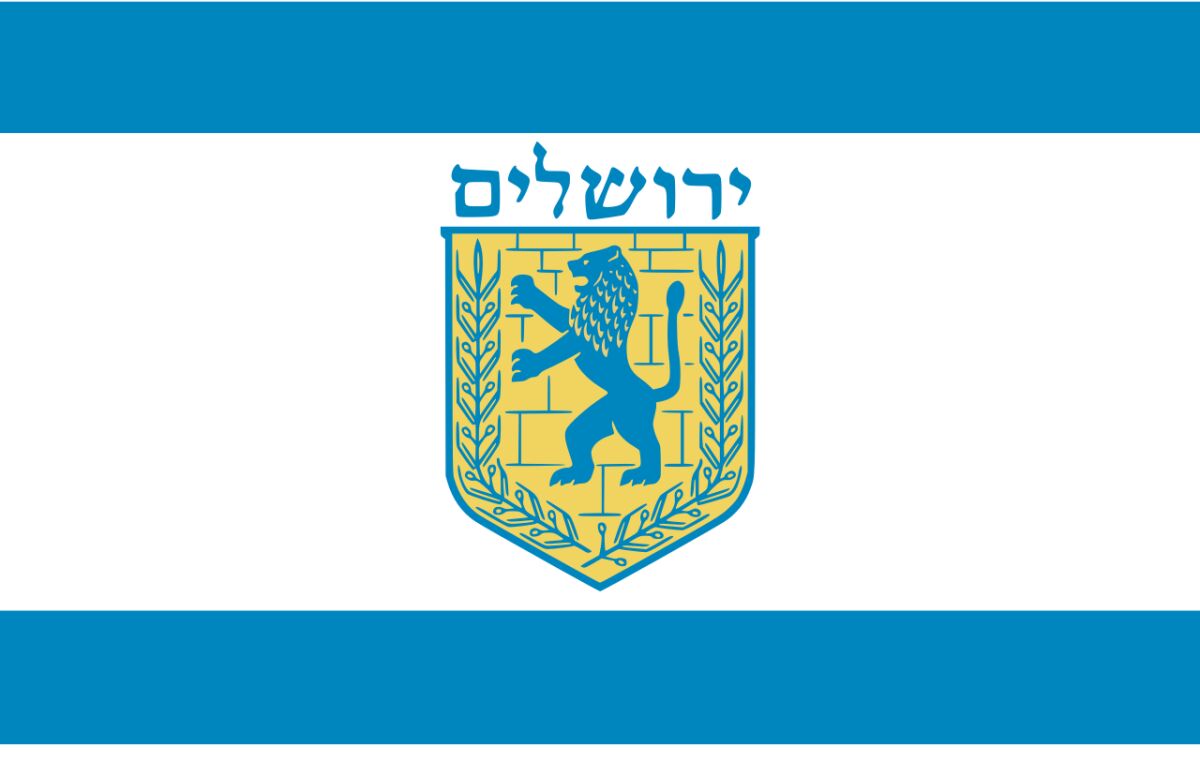Flags are the most ubiquitous symbols of nations and peoples. They are, in a sense, the “standards” of the modern world (i.e., Numbers 2, 10—and the Hebrew word for such, ancient and modern, is the same). And when it comes to the so-called Israeli-Palestinian conflict, flags are marched out in full force. Lately, Israeli and Palestinian flags have been brandished with inflamed passions in major cities all around the world.
Everyone knows who these flags represent (at least generally; although even here, there is a great deal of nuance and misconception). But how many know what these literal symbols actually symbolize—what they were designed to represent?
Here’s a brief history and comparison of the Israeli and Palestinian flags, their symbolism and origins.
Palestinian Flag

The Palestinian flag is a relatively recent creation. It was first adopted on May 28, 1964, by the Palestine Liberation Organization (plo), officially formed on the same day with the goal of the “liberation of Palestine” through armed struggle. In 1988 (a year after the plo was declared a terrorist organization by the United States), leader Yasser Arafat declared a new “State of Palestine” and adopted this as the state flag.
The theme of the flag is almost identical to that of Jordan and several other Arab nations, which use variations of the “Pan-Arab colors.” The origin of these flags is also relatively recent and surprising. The original design is attributed to British diplomat Sir Mark Sykes in 1916. (Sykes was actually a strong supporter of Zionism and a key player in the Balfour Declaration, aimed at establishing a “national home for the Jewish people” in the Holy Land.) The flag, submitted by Sykes to the Sharifian Caliph, Emir of Mecca and “King of the Arabs” Hussein bin Ali, was designed as a way of unifying the Arab world in overthrowing the Ottoman Empire, which was then at war with Britain and its allies. The Ottoman Empire had, of course, controlled much of the Middle East for centuries (including the territory of Palestine, which was actually simply known during this period as “Ottoman Syria”).

Known as the “flag of the Arab Revolt,” Sykes’ flag marshalled meaningful colors already seen in various forms on certain flags in the region—designing the banner to fuel a nationalist uprising, one that became especially associated with Hashemite rule (hence the Jordanian flag).

The choice of the Pan-Arab colors are suggested to be a nod in part to the 13th-century Arab poet Safi al-Din al-Hili, who wrote: “White are our deeds, black are our battles, green are our fields, red are our swords.” More specifically, the colors were intended to each highlight different Arab dynasties through history: white for the Umayyad dynasty (c.e. 661–750); black for the Abbasid (c.e. 750–1517, off and on); green for the Fatimid (c.e. 909–1171); red for the Hashemite (c.e. 1916–present).

Within this delineation, the colors have their own symbolic meaning: Black is the color of revenge, from pre-Islamic time, and the Abbasid color of mourning; white was used by the Abbasid-opposed Umayyads as their symbol of mourning, and also symbolized the Prophet Mohammed’s first battle of Badr; the Fatimid green symbolized allegiance to the prophet’s cousin Ali, who famously wrapped himself in green to prevent an assassination attempt against the Prophet Muhammad; the red symbolizes the bloody struggle for freedom. (See Dr. Mahdi Abdul Hadi’s Evolution of the Arab Flag for more detail on this subject.)
Israeli Flag

The current Israeli flag was first designed in 1885 and flown that same year over the Jewish community in Rishon LeZion (south of Tel Aviv). The flag was formally adopted in 1897 by the First Zionist Congress. When the State of Israel was formed in 1948 by a United Nations resolution, it immediately became the national flag.
The blue-and-white flag was designed to reflect the traditional blue-bordered, white Jewish prayer shawl (example below). At a group meeting in Basel, Switzerland in 1897, Zionist David Wolffsohn wrote: “What flag would we hang? … We have a flag—and it is blue and white. The talith with which we wrap ourselves when we pray: That is our symbol. Let us take this talith from its bag and unroll it before the eyes of Israel and the eyes of all nations. So I ordered a blue and white flag with the Shield of David painted upon it.”

The blue represents the tkhelet color, mentioned numerous times in the Bible. In symbolism, the blue colour became interpreted as representative of the glory of God and the “splendors of the firmament,” with the white representing purity and benevolence.

The symbol in the middle is the famous Star of David, which in Hebrew is actually known by an entirely different name: the Shield of David (מגן דוד). This is in connection to a tradition that this symbol adorned the shields of the Israelites. There are several different theories about the actual origin of this symbol (as the use of a simple twin-triangle symbol can be found in other ancient cultures, going back some 4,000-plus years). The star symbol can be found in firm Jewish contexts (i.e., synagogues) at least as far back as the early first millennium c.e. Earlier, five-pointed star symbols have been discovered in archaeological contexts—notable are the more than 100 seal impressions from second century b.c.e. Jerusalem bearing five-pointed stars, between the points of which are letters in the early Hebrew script spelling a shortened form of the word “Jerusalem” (ירשלם).

The six-pointed star was commonly used by Jewish Kabbalist mystics in the Middle Ages, including as a protective amulet, and the shape has been related to the arrangement of the traditional Passover Seder. Unlike the menorah and lion, however, there is no clear biblical link to this star symbol. Some who dispute its use link it to the “Star of Chiun/Remphan” mentioned in Amos 5:26 (also Acts 7:43). Others interpret it as a symbol simply deriving from the very name of David (in the ancient Hebrew-Phoenician script, the two “d” letters are represented by triangles). The six points and six sides of the star are also sometimes interpreted as a nod to the 12 tribes of Israel. Another theory is that the shape is derived from the crown of a pomegranate and/or the shape of the lily flower—imagery which adorned the pillars of the temple of Solomon (1 Kings 7:18-22). Exact imagery/shape aside, at least the name—“Shield of David”—is a connection to biblical terminology found numerous times throughout the psalms of David, in naming God as his “shield.”

There is a certain misconception that the two blue bands of the flag of Israel represent an Israeli desire to spread an empire between the Nile and Euphrates rivers, based on certain verses about the biblical borders of Israel (Genesis 15:18 and 1 Kings 8:65). This theory was promoted in the Arab world, most notably by Yasser Arafat and Hamas representatives, but has since been broadly dismissed (even in Arabic journalism). Wolffsohn’s original flag declaration refutes this notion, and Israel’s actions of repeatedly relinquishing such territory (such as the Sinai Peninsula) attest to this.
Ironically, it was the plo whose famous mantra was “from the river to the sea.” This chant, which has become popular in protests around the world—“From the river to the sea, Palestine will be free”—is actually more explicit in the original Arabic: “From the water to the water, Palestine [is] Arab.”

Sword and Shield
Two very different flags, for two very different movements. One symbolically tied to revolt, warfare, revenge, mourning and the sword. The other, symbolically tied to God, prayer and the shield.
The flags representative of each side fit well alongside the below picture that became famous during the round of conflict in 2021 between Israel and Hamas. (Can you tell which flag is representative of which?)

The two flags, in their own right, symbolize a struggle highlighted in the earliest pages of the Bible, nearly 4,000 years ago—a clash of related Abrahamic peoples. One side that lives by the sword (i.e., Genesis 27:40); the other, by the shield (i.e., 2 Samuel 22:3).
One can never find peace living by the sword; conversely, one can never truly win from a solely defensive position. As such, can there ever be a true, lasting peace? Is there a solution to the never-ending impasse, to such an intractable conflict?
One thing is certain: The status quo is unsustainable, and has proven an abject failure. This problem, perhaps more than any other entrenched geopolitical issue on the face of the earth, requires that proverbial “strong hand from someplace.”
“We will be glad in your salvation, and in the name of our God we will put up our flags …. Come to our help, Lord: let the king give ear to our cry” (Psalm 20:5, 9, bbe)

